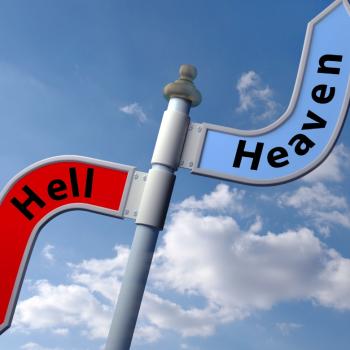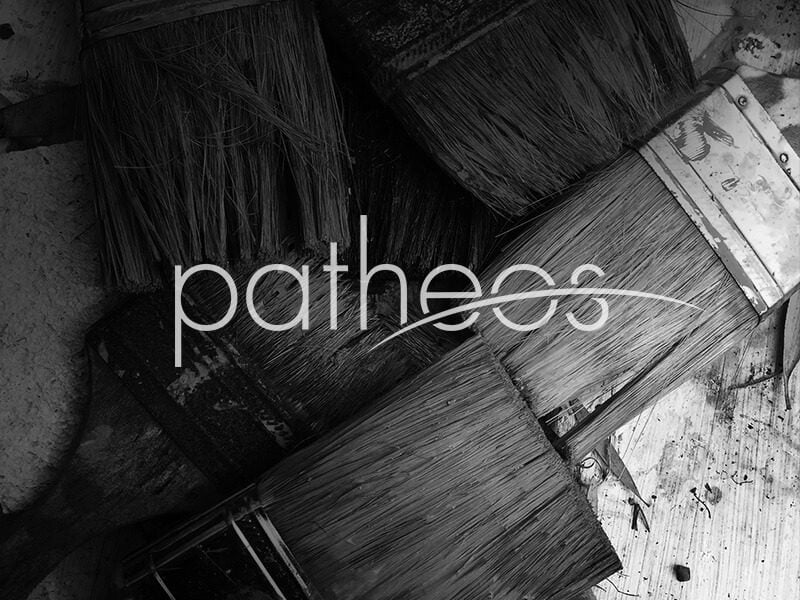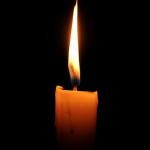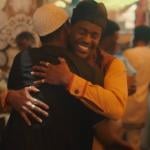Jeremiah, in his own words
BELOW IS A TRANSCRIPT OF THE REV. JEREMIAH WRIGHT’S FULL SPEECH TO THE NAACP ON SUNDAY:
The NAACP has an incomparable record. It has the longest list of achievements in the history of this country as being the undisputed champion in the fight against discrimination, racial prejudice, and unjust public policies, which have caused people made in the image of God to be treated as less than human or treated as second-class citizens.
In its early days, the NAACP and the black church in the United States of America were seemingly joined at the hip in the fight against injustice and the fight for equality on behalf of all people of color.
Many local chapters of the NAACP were started in black churches. Hundreds of black churches. The NAACP’s fight for justice and freedom, however, is not limited to the concerns of the black church, historically or contemporaneously. And when the truth is told, as Paula
Giddings does so powerfully in her book “When and Where I Enter,” there were times when the NAACP had to drag some timid black preachers along kicking and screaming as in the Montgomery bus boycott designed by the NAACP, not the SCLC.
Throughout its 99-year history, the NAACP has been built by people of all races, all nationalities, and all faiths on one primary premise, which is that all men and women are created equal. The nation’s oldest civil rights organization has changed America’s history. Despite violence, intimidation, and hostile government policies, the NAACP and its grassroots membership have persevered.
Now, somebody please tell the Oakland county executive that that sentence starting with the words “despite violence, intimidation, and hostile government policies” is a direct quote from the NAACP’s profile in courage. It didn’t come from Jeremiah Wright.
Otherwise, he will attribute the quote to me and continue to say that I and am one of the most divisive people he has ever of heard speak. When he has never heard me speak. And just to help him out, I am not one of the most divisive. Tell him the word is descriptive.
I describe the conditions in this country. Conditions divide, not my descriptions. Somebody say “Amen.” If you can’t say “Amen,” you’re too mad, just say “Ouch.”
The NAACP is nonpartisan. The NAACP is not beholden to, controlled by, or partial to any one faith tradition. The NAACP says proudly that it is a compound of people of all races, all nationalities and all faiths.
And it is for that reason that I am especially grateful to Rev. Dr. Wendell Anthony and the Detroit branch of the NAACP for honoring me by having me address their 2008 theme “A Change is Going to Come.”
One of your cities’ political analysts says in print that first just my appearance here in Detroit will be polarizing. Well, I’m not here for political reasons. I am not a politician. I know that fact will surprise many of you because many in the corporate-owned media have made it seem as if I had announced that I’m running to for the Oval Office. I am not running for the Oval Office. I’ve been running for Jesus a long, long time, and I’m not tired yet.
I am sorry your local political analysts and your neighboring county executives think my being here is polarizing and my sermons are divisive, but I’m not here to address an analyst’s opinion or a county executive’s point of view. I am here to address your 2008 theme, and I stand here as one representative of the African American religious tradition which works in concert with other faith traditions, believing as we work together that a change is going to come.
On that point, about other faith traditions, in addition to Pastor Anthony, Pastor Nicholas Hood, Pastor Charles Adams, Pastor William Revelli, Pastor James Perkins, Pastor Wilma Rudolph, Pastor Holly who is suffering from a stroke, Father Michael Flager, Father Jeremy Tobin, Pastor Dee Dee Coleman, Dr. Georgia Hill and Rev. Lonnie Peek. I would also like to thank Sister Melanie Maron, the former executive director of the Chicago chapter of the American Jewish Committee and the current executive director of the Washington, D.C., chapter of the American Jewish committee. I would like to thank my good friend and Jewish author Tim Wise for his support, and I would like to offer a special “shookran” to Imam Muhammad Ali Elahi of the Islamic House of Wisdom in Dearborn Heights for his courage, his conviction and his support.
The support of the Jewish community, the Muslim community, and the Christian community, Protestant and Catholic, is in concert with the credo of the NAACP and a definite sign that a change is definitely going to come. An additional special thank you is offered to Soledad O’Brien for CNN’s outstanding “Black in America” and my long-term friend Roland Martin.
I believe that a change is going to come because many of us are committing to changing how we see others who are different.
In the past, we were taught to see others who are different as somehow being deficient. Christians saw Jews as being deficient. Catholics saw Protestants as being deficient. Presbyterians saw Pentecostals as being deficient.
Folks who like to holler in worship saw folk who like to be quiet as deficient. And vice versa.
Whites saw black as being deficient. It was none other than Rudyard Kipling who saw the “White Man’s Burden” as a mandate to lift brown, black, yellow people up to the level of white people as if whites were the norm and black, brown and yellow people were abnormal subspecies on a lower level or deficient.
Europeans saw Africans as deficient. Lovers of George Friedrich Handel and Wolfgang Amadeus Mozart saw lovers of B.B. King and Frankie Beverly and Maze as deficient. Lovers of Marian Anderson saw lovers of Lady Day and Anita Baker as deficient. Lovers of European cantatas — Comfort ye in the glory, the glory of the Lord — Lovers of European cantatas saw lovers of common meter — I love the Lord, He heard my cry — they saw them as deficient.
In the past, we were taught to see others who are different as being deficient. We established arbitrary norms and then determined that anybody not like us was abnormal. But a change is coming because we no longer see others who are different as being deficient. We just see them as different. Over the past 50 years, thanks to the scholarship of dozens of expert in many different disciplines, we have come to see just how skewed, prejudiced and dangerous our miseducation has been.
Miseducation. Miseducation incidentally is not a Jeremiah Wright term. It’s a word coined by Dr. Carter G. Woodson over 80 years ago. Sounds like he talked a hate speech, doesn’t it? Now, analyze that. Two brilliant scholars and two beautiful sisters, both of whom hail from Detroit in the fields of education and linguistics, Dr. Janice Hale right here at Wayne State University, founder of the Institute for the study of the African-American child. and Dr. Geneva Smitherman formerly of Wayne State University now at Michigan State University in Lansing. Hail in education and Smitherman in linguistics. Both demonstrated 40 years ago that different does not mean deficient. Somebody is going to miss that.
Turn to your neighbor and say different does not mean deficient. It simply means different. In fact, Dr. Janice Hale was the first writer whom I read who used that phrase. Different does not mean deficient. Different is not synonymous with deficient. It was in Dr. Hale’s first book, “Black Children their Roots, Culture and Learning Style.” Is Dr. Hale here tonight? We owe her a debt of gratitude. Dr. Hale showed us that in comparing African-American children and European-American children in the field of education, we were comparing apples and rocks.
And in so doing, we kept coming up with meaningless labels like EMH, educable mentally handicapped, TMH, trainable mentally handicapped, ADD, attention deficit disorder.
And we were coming up with more meaningless solutions like reading, writing and Ritalin. Dr. Hale’s research led her to stop comparing African-American children with European-American children and she started comparing the pedagogical methodologies of African-American children to African children and European-American children to European children. And bingo, she discovered that the two different worlds have two different ways of learning. European and European-American children have a left brained cognitive object oriented learning style and the entire educational learning system in the United States of America. Back in the early ’70s, when Dr. Hale did her research was based on left brained cognitive object oriented learning style. Let me help you with fifty cent words.
Left brain is logical and analytical. Object oriented means the student learns from an object. From the solitude of the cradle with objects being hung over his or her head to help them determine colors and shape to the solitude in a carol in a PhD program stuffed off somewhere in a corner in absolute quietness to absorb from the object. From a block to a book, an object. That is one way of learning, but it is only one way of learning.
African and African-American children have a different way of learning.
They are right brained, subject oriented in their learning style. Right brain that means creative and intuitive. Subject oriented means they learn from a subject, not an object. They learn from a person. Some of you are old enough, I see your hair color, to remember when the NAACP won that tremendous desegregation case back in 1954 and when the schools were desegregated. They were never integrated. When they were desegregated in Philadelphia, several of the white teachers in my school freaked out. Why? Because black kids wouldn’t stay in their place. Over there behind the desk, black kids climbed up all on them.
Because they learn from a subject, not from an object. Tell me a story. They have a different way of learning. Those same children who have difficulty reading from an object and who are labeled EMH, DMH and ADD. Those children can say every word from every song on every hip hop radio station half of who’s words the average adult here tonight cannot understand. Why? Because they come from a right-brained creative oral culture like the (greos) in Africa who can go for two or three days as oral repositories of a people’s history and like the oral tradition which passed down the first five book in our Jewish bible, our Christian Bible, our Hebrew bible long before there was a written Hebrew script or alphabet. And repeat incredulously long passages like Psalm 119 using mnemonic devices using eight line stanzas. Each stanza starting with a different letter of the alphabet. That is a different way of learning. It’s not deficient, it is just different. Somebody say different. I believe that a change is going to come because many of us are committed to changing how we see other people who are different.
FOR THE REST OF THE SPEECH ON CNN.COM, CLICK HERE
And for good measure:
HERE IS THE TRANSCRIPT FROM THE REV. WRIGHT’S APPEARANCE AT THE NATIONAL PRESS CLUB IN WASHINGTON, D.C. THIS A.M.:
REVEREND WRIGHT: Over the next few days, prominent scholars of the African-American religious tradition from several different disciplines — theologians, church historians, ethicists, professors of the Hebrew bible, homiletics, hermeneutics, and historians of religions — those scholars will join in with sociologists, political analysts, local church pastors, and denominational officials to examine the African-American religious experience and its historical, theological and political context.
The workshops, the panel discussions, and the symposium will go into much more intricate detail about this unknown phenomenon of the black church…
(LAUGHTER)
… than I have time to go into in the few moments that we have to share together. And I would invite you to spend the next two days getting to know just a little bit about a religious tradition that is as old as and, in some instances, older than this country.
And this is a country which houses this religious tradition that we all love and a country that some of us have served. It is a tradition that is, in some ways, like Ralph Ellison’s the “Invisible Man.”
It has been right here in our midst and on our shoulders since the 1600s, but it was, has been, and, in far too many instances, still is invisible to the dominant culture, in terms of its rich history, its incredible legacy, and its multiple meanings.
The black religious experience is a tradition that, at one point in American history, was actually called the “invisible institution,” as it was forced underground by the Black Codes.
The Black Codes prohibited the gathering of more than two black people without a white person being present to monitor the conversation, the content, and the mood of any discourse between persons of African descent in this country.
Africans did not stop worshipping because of the Black Codes. Africans did not stop gathering for inspiration and information and for encouragement and for hope in the midst of discouraging and seemingly hopeless circumstances. They just gathered out of the eyesight and the earshot of those who defined them as less than human.
They became, in other words, invisible in and invisible to the eyes of the dominant culture. They gathered to worship in brush arbors, sometimes called hush arbors, where the slaveholders, slave patrols, and Uncle Toms couldn’t hear nobody pray.
From the 1700s in North America, with the founding of the first legally recognized independent black congregations, through the end of the Civil War, and the passing of the 13th and 14th Amendments to the Constitution of the United States of America, the black religious experience was informed by, enriched by, expanded by, challenged by, shaped by, and influenced by the influx of Africans from the other two Americas and the Africans brought in to this country from the Caribbean, plus the Africans who were called “fresh blacks” by the slave-traders, those Africans who had not been through the seasoning process of the middle passage in the Caribbean colonies, those Africans on the sea coast islands off of Georgia and South Carolina, the Gullah — we say in English “Gullah,” those of us in the black community say “Geechee” — those people brought into the black religious experience a flavor that other seasoned Africans could not bring.
It is those various streams of the black religious experience which will be addressed in summary form over the next two days, streams which require full courses at the university and graduate- school level, and cannot be fully addressed in a two-day symposium, and streams which tragically remain invisible in a dominant culture which knows nothing about those whom Langston Hughes calls “the darker brother and sister.”
It is all of those streams that make up this multilayered and rich tapestry of the black religious experience. And I stand before you to open up this two-day symposium with the hope that this most recent attack on the black church is not an attack on Jeremiah Wright; it is an attack on the black church.
(APPLAUSE)
As the vice president told you, that applause comes from not the working press.
(LAUGHTER)
The most recent attack on the black church, it is our hope that this just might mean that the reality of the African-American church will no longer be invisible.
Maybe now, as an honest dialogue about race in this country begins, a dialogue called for by Senator Obama and a dialogue to begin in the United Church of Christ among 5,700 congregations in just a few weeks, maybe now, as that dialogue begins, the religious tradition that has kept hope alive for people struggling to survive in countless hopeless situation, maybe that religious tradition will be understood, celebrated, and even embraced by a nation that seems not to have noticed why 11 o’clock on Sunday morning has been called the most segregated hour in America.
We have known since 1787 that it is the most segregated hour. Maybe now we can begin to understand why it is the most segregated hour.
And maybe now we can begin to take steps to move the black religious tradition from the status of invisible to the status of invaluable, not just for some black people in this country, but for all the people in this country.
Maybe this dialogue on race, an honest dialogue that does not engage in denial or superficial platitudes, maybe this dialogue on race can move the people of faith in this country from various stages of alienation and marginalization to the exciting possibility of reconciliation.
That is my hope, as I open up this two-day symposium. And I open it as a pastor and a professor who comes from a long tradition of what I call the prophetic theology of the black church.
Now, in the 1960s, the term “liberation theology” began to gain currency with the writings and the teachings of preachers, pastors, priests, and professors from Latin America. Their theology was done from the underside.
Their viewpoint was not from the top down or from a set of teachings which undergirded imperialism. Their viewpoints, rather, were from the bottom up, the thoughts and understandings of God, the faith, religion and the Bible from those whose lives were ground, under, mangled and destroyed by the ruling classes or the oppressors.
Liberation theology started in and started from a different place. It started from the vantage point of the oppressed.
In the late 1960s, when Dr. James Cone’s powerful books burst onto the scene, the term “black liberation theology” began to be used. I do not in any way disagree with Dr. Cone, nor do I in any way diminish the inimitable and incomparable contributions that he has made and that he continues to make to the field of theology. Jim, incidentally, is a personal friend of mine.
I call our faith tradition, however, the prophetic tradition of the black church, because I take its origins back past Jim Cone, past the sermons and songs of Africans in bondage in the transatlantic slave trade. I take it back past the problem of Western ideology and notions of white supremacy.
I take and trace the theology of the black church back to the prophets in the Hebrew Bible and to its last prophet, in my tradition, the one we call Jesus of Nazareth.
FOR THE REST OF THE TRANSCRIPT FROM THE PRESS CLUB (VIA THE NEW YORK TIMES) CLICK HERE















